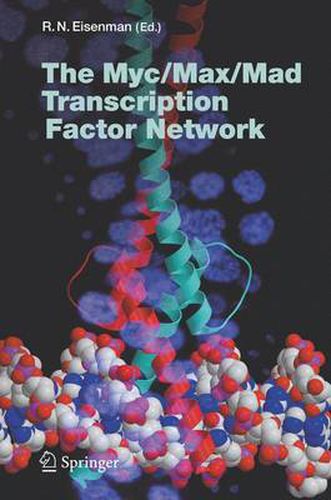Readings Newsletter
Become a Readings Member to make your shopping experience even easier.
Sign in or sign up for free!
You’re not far away from qualifying for FREE standard shipping within Australia
You’ve qualified for FREE standard shipping within Australia
The cart is loading…






This title is printed to order. This book may have been self-published. If so, we cannot guarantee the quality of the content. In the main most books will have gone through the editing process however some may not. We therefore suggest that you be aware of this before ordering this book. If in doubt check either the author or publisher’s details as we are unable to accept any returns unless they are faulty. Please contact us if you have any questions.
Scientists often look askance at their colleagues whose research appears too strongly focused on a single gene or gene product. We are supposed to be interested in the big picture and excessive zeal in pursuit of a single pixel might seem to border on an obsession that is likely to yield only details. However as this volume of Current Topics in Microbiology and Immunology demonstrates, this is certainly not the case for myc. Intense study of this en- matic proto-oncogene over the last twenty years has only broadened our view of its functions and led to insights into mechanisms relating to transcriptional regulation as well as to cell growth, proliferation, differentiation, apoptosis and organismal development. The myc gene originally came to light as a retroviral oncogene (v-myc) associated with a wide range of acute neoplasms. It was later shown to be a virally transduced cellular gene (c-myc) which is a member of family of on- genes (c-myc,N-myc,L-myc). These family members are themselves subject to a bewildering assortment of genetic rearrangements associated with many different types of tumors derived from many different types of cells. These rearrangements (including chromosomal translocation, viral integration, and gene ampli?cation) act to uncouple expression of the myc family genes from their normal physiological regulators. The chapter by LIU and LEVENS - scribes the key pathways leading to regulation of myc expression, showing that such regulation occurs at several different levels and through multiple mechanisms.
$9.00 standard shipping within Australia
FREE standard shipping within Australia for orders over $100.00
Express & International shipping calculated at checkout
This title is printed to order. This book may have been self-published. If so, we cannot guarantee the quality of the content. In the main most books will have gone through the editing process however some may not. We therefore suggest that you be aware of this before ordering this book. If in doubt check either the author or publisher’s details as we are unable to accept any returns unless they are faulty. Please contact us if you have any questions.
Scientists often look askance at their colleagues whose research appears too strongly focused on a single gene or gene product. We are supposed to be interested in the big picture and excessive zeal in pursuit of a single pixel might seem to border on an obsession that is likely to yield only details. However as this volume of Current Topics in Microbiology and Immunology demonstrates, this is certainly not the case for myc. Intense study of this en- matic proto-oncogene over the last twenty years has only broadened our view of its functions and led to insights into mechanisms relating to transcriptional regulation as well as to cell growth, proliferation, differentiation, apoptosis and organismal development. The myc gene originally came to light as a retroviral oncogene (v-myc) associated with a wide range of acute neoplasms. It was later shown to be a virally transduced cellular gene (c-myc) which is a member of family of on- genes (c-myc,N-myc,L-myc). These family members are themselves subject to a bewildering assortment of genetic rearrangements associated with many different types of tumors derived from many different types of cells. These rearrangements (including chromosomal translocation, viral integration, and gene ampli?cation) act to uncouple expression of the myc family genes from their normal physiological regulators. The chapter by LIU and LEVENS - scribes the key pathways leading to regulation of myc expression, showing that such regulation occurs at several different levels and through multiple mechanisms.